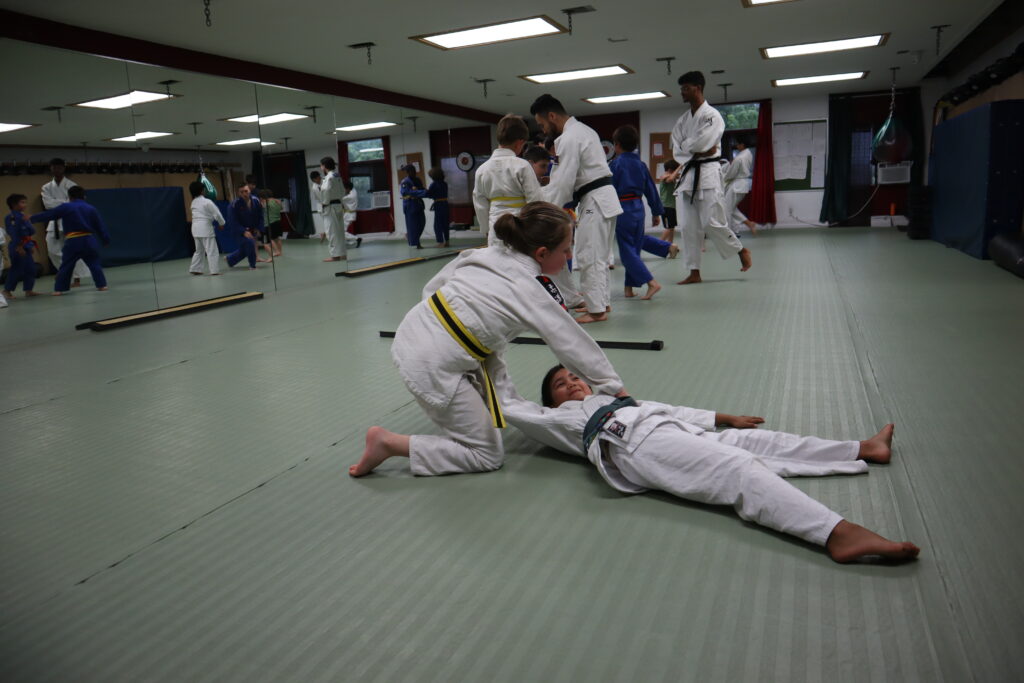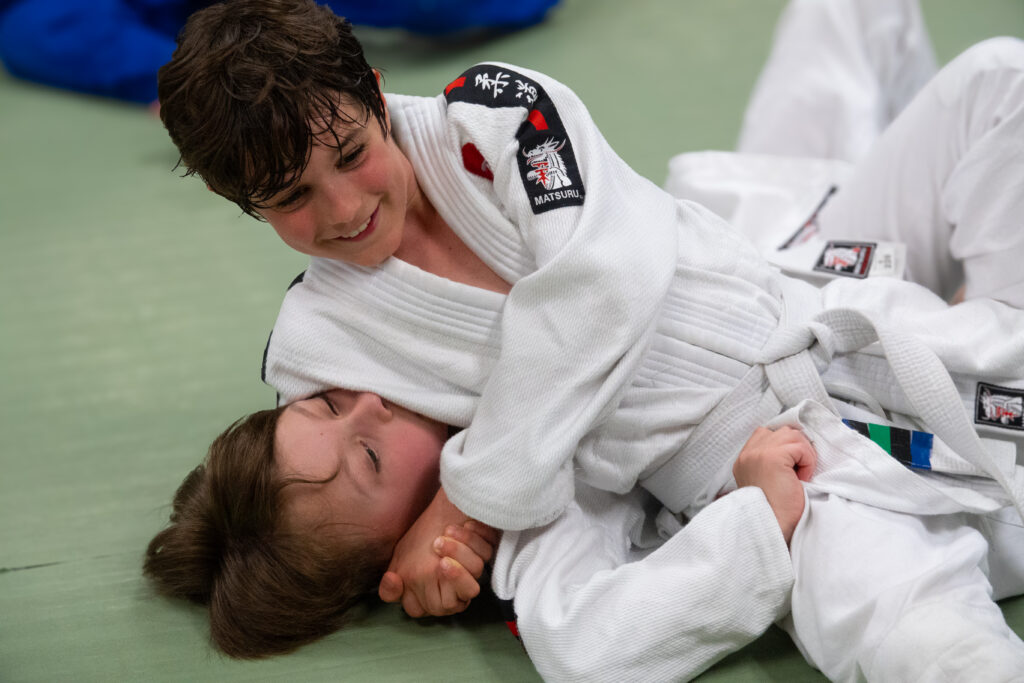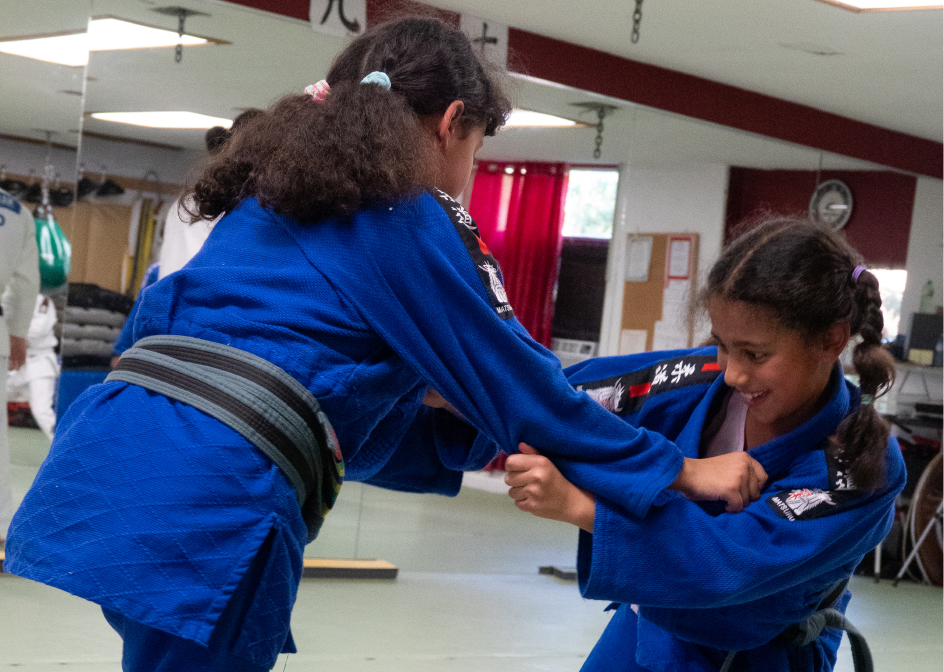Menu
Close
Menu
Close

Taking your first steps into martial arts can feel both exciting and overwhelming. The journey begins with understanding what martial arts entails and finding the style that matches your personal goals. Choosing the right martial art is essential for long-term enjoyment and success, as each discipline offers unique benefits and challenges. Whether you’re seeking self-defence skills, physical fitness, or mental discipline, there’s a martial art that aligns with your needs.
Before diving in, it’s helpful to know what to expect from your first classes. Most beginners will need basic gear like uniforms and protective equipment, and should prepare for warm-up routines and fundamental techniques. Your initial classes will typically include an introduction to the facility and an overview of the martial art. Remember that consistent practice is key – martial arts isn’t just about learning moves, but embracing a journey of self-discovery and resilience.
Selecting a martial art that aligns with your goals and physical abilities is crucial for long-term enjoyment and success. Each discipline offers unique benefits and approaches to combat techniques.
Karate originated in Okinawa, Japan and focuses on powerful striking techniques using hands, feet, knees, and elbows. It’s known for its discipline and emphasis on character development.
In most karate dojos, training includes three main components: kihon (basics), kata (forms), and kumite (sparring). These elements help develop strong fundamentals and practical self-defence skills.
What makes karate appealing to beginners is its structured curriculum. You’ll progress through belt ranks, giving you clear milestones to achieve. Each rank requires mastering specific techniques and forms.
Karate is excellent for developing:
This Japanese martial art works well for people who enjoy practicing precise movements and building strength. Classes typically accommodate various fitness levels, making it accessible to most beginners.
Judo, meaning “gentle way,” or “way of yielding” was developed in Japan by Jigoro Kano in 1882. Despite its name, judo is a dynamic grappling art focusing on throws, takedowns, and ground control rather than strikes. Our children’s programs offer both Karate and Judo.
The core principle of judo is maximum efficiency with minimum effort. We learn to use an opponent’s strength and momentum against them rather than opposing force with force.
Judo training takes place at our dojo on padded mats, including a sprung floor underneath for maximum safety. Students wear traditional judogi (uniform) and practice with partners of varying skill levels. Falling safely (ukemi) is taught first to prevent injuries.
Competition is a significant aspect of judo training, though not mandatory. The sport has been in the Olympics since 1964, featuring weight divisions for fair competition. Tina Takahashi, a pioneer in women’s judo, was Canada’s first Olympic(1988) and World(1986-87) female coach. An eleven time Canadian Champion, Tina Sensei is also a former World University Champion(1984) and World Sambo Champion(1988) as well as Pacific Rim(2X Gold 1980-81).
Go to https://tinatak.com/tina-takahashi/ for full biography.
Judo benefits include:
Taekwondo is a Korean martial art known for its high, fast kicks and dynamic movements. It’s one of the most widely practiced martial arts globally and became an Olympic sport in 2000. The origins of taekwondo are documented to the 20th century coming from Japan who occupied Korea. Shotokan, Shudokan, and Shito-ryu karate styles were the precursors to taekwondo, history later being revised to suit and support South Korean nationalism.
Derived from elite Russian military fighting systems, Combat Sambo offers a comprehensive approach to self-defence and combat techniques. Also influenced by Judo from Russian sensei’s who trained in Japan. Sambo is an amalgam of various wrestling styles that were practised in Europe and Asia. This dynamic martial art combines striking, grappling, and ground fighting, making it a highly effective system for both sport and self-defence. Combat Sambo prepares you for real-world scenarios by teaching practical techniques that are easy to apply. Many Pride fighters including the great Fedor Emelianenko, and UFC Champions come from sambo, Khabib Nurmagomedov, Merab Dvalishvili, Islam Makhachev, Dan Severn, Shavkat Rakhmonov, and Andrei Arlovski. Clearly, Sambo has played a significant role in the success of many MMA fighters, providing them with a very wide set of techniques and strategies that they can use in the cage. These fighters have all trained in Sambo before their MMA careers and have achieved great success in the sport. The effectiveness of Sambo in MMA has inspired a new generation of martial artists to take up this dynamic and challenging combat sport. Tina Takahashi Martial Arts is the home to multiple Pan American Sambo & Combat Sambo Champions as well as Sean MacFadyen( a 4th degree judoka and 7th degree jujutsu master), Canada’s only certified coach recognized by FIAS the World Sambo ruling body.
For more details, go to: https://tinatak.com/combat-sambo-ottawa/
Muay Thai also known as Thai boxing is a martial art from Thailand that utilizes stand up and striking techniques, including punches, kicks, elbows, and knees, earning it the nickname “Art of Eight Limbs”. It has a rich history dating back to the 13th century and has been a popular training style for UFC fighters.
Beginning your martial arts journey requires understanding core concepts, learning essential techniques, and creating a consistent practice schedule. Setting realistic expectations will help you see progress in your skills and confidence.
When you first enter our martial arts school, you’ll encounter fundamental concepts that form the backbone of your training. Students begin with proper stances and basic movements. These foundational elements are crucial as they build your balance, coordination, and body awareness.
Martial arts have their own terminology and etiquette. For example, you must bow when entering or leaving the training area. This shows respect for the discipline and your fellow practitioners.
Most beginners start with simple techniques focused on proper form rather than power or speed. These include basic blocks, strikes, and footwork. Don’t rush through these fundamentals – they’re essential building blocks for more advanced skills.
Safety is paramount in martial arts training. You’ll learn how to fall properly, control your movements, and train with partners responsibly.
Consistent practice is the key to improving your martial arts skills. Our instructors focus on a small set of techniques rather than trying to learn everything at once. Quality matters more than quantity.
Many traditional martial arts include kata (choreographed patterns of movements) that help you memorize techniques and develop muscle memory. These forms teach you proper sequence, timing, and execution.
Expect to make mistakes often. This is a normal part of the learning process. Great instructors provide continual constructive feedback to help you refine your techniques over time.
Attending class regularly is essential for progress. We recommend training at least 2-3 times weekly to develop proper skills. Supplementing with home practice between classes can accelerate your improvement.
Creating a sustainable training schedule helps maintain steady progress. We recommend balancing martial arts practice with adequate rest and recovery to prevent burnout and injuries.
Your routine should include:
All of our programs offer a grading system that recognizes your progress through belts or ranks. It is difficult rush this process – focus on skill development rather than advancement speed.
Setting clear goals helps direct your training. Whether you’re practicing for self-defence, competition, or personal growth, your objectives will shape your approach.
Remember that martial arts training cultivates more than physical techniques – it builds discipline, focus, and self-confidence that extend beyond the training floor.
After learning the basics, your martial arts journey shifts to building proficiency and earning recognition for your hard work. Consistent training and proper goal-setting are essential for growth in any martial art discipline.
Regular practice is the foundation of martial arts advancement. Beginning martial artists need regular practise sessions to build proficiency, confidence, and muscle memory. We recommend training at least twice per week to see steady progress.
Consistency matters more than intensity. Short, focused practices create better results than occasional long sessions. Keep a training log to track your improvements and identify areas that need more attention.
Home practice complements formal classes. Set aside 15-20 minutes daily to practice basic moves, stances, and combinations. This reinforces what you’ve learned and accelerates your development.
Keys to Effective Practice:
Your first belt promotion represents an important milestone in your martial arts journey. We require consistent attendance and demonstration of specific techniques before awarding promotions.
Don’t focus solely on belt colours. Instead, concentrate on skill development and personal growth. Belt requirements vary between schools, but typically involve:
1. Demonstrating basic techniques with proper form
2. Showing understanding of fundamental principles
3. Completing a minimum training period (often 3-4 months)
4. Displaying appropriate discipline and respect
Prepare for evaluations by reviewing all required techniques regularly. Formal testing events are held to assess students, along with ongoing observation. Approach promotions with humility and a willingness to learn.
The black belt journey requires long-term commitment and patience. Most practitioners need 6-15 years of dedicated training to reach this level. We view black belt not as an endpoint but as the beginning of deeper understanding.
Black belt candidates must demonstrate technical proficiency across all aspects of their martial art. This includes striking, blocking, forms, grappling, throwing, and often sparring or self-defence applications. Mental discipline becomes equally important as physical skill at this level.
Set intermediate goals along your path. Each coloured belt presents new challenges and opportunities for growth. Track your progress against specific techniques while focusing on promotion dates.
Black Belt Requirements Often Include:
Martial arts training offers a unique combination of physical conditioning and mental development that few other activities can match. The practice builds your body while sharpening your mind through consistent, purposeful training.
Balance is one of the first physical attributes you’ll develop in martial arts. Most techniques require proper weight distribution and stable stances that strengthen your core muscles over time.
When practicing kicks, you’ll notice how your body gradually adapts to maintain stability on one leg. This improvement in balance directly translates to better coordination in daily activities.
Martial arts builds functional strength rather than just aesthetic muscle. Your body learns to generate power through proper technique and full-body coordination rather than isolated muscle groups.
Many beginners are surprised by how quickly they develop physical strength without traditional weightlifting. The resistance provided by partner drills, striking pads, and bodyweight exercises creates practical strength that serves you both in class and everyday life.
Training also reduces injury risk as your body becomes more resilient and structurally sound.
Martial arts training begins with thorough warm-ups that gradually increase your range of motion. These stretching routines are essential for performing techniques properly and preventing injuries.
The dynamic movements in martial arts naturally improve your flexibility over time. High kicks, deep stances, and evasive maneuvers all require and develop joint mobility.
Cardiovascular fitness improves dramatically through martial arts training. The high-intensity intervals of sparring, pad work, and drilling techniques create an effective cardio workout.
Many beginners find that martial arts provides a more engaging fitness experience than traditional gym workouts. The focus on skill development makes the physical exertion feel purposeful rather than tedious.
Regular training also helps with weight management and improves overall health markers like blood pressure and resting heart rate.
Martial arts teaches mental discipline through focused practice. You’ll develop greater concentration as you learn to execute techniques with precision while managing your breathing.
The mental benefits extend beyond the training floor. Many practitioners report reduced stress levels and improved emotional regulation in their daily lives.
Learning to control your body while under pressure builds self-confidence. The progressive nature of martial arts training provides constant challenges that, when overcome, strengthen your mental resilience.
We’ve observed how students develop patience through the process of mastering techniques. The understanding that progress takes time and consistent effort is a valuable life lesson.
Mindfulness becomes natural as you learn to stay present during training. The immediate feedback of martial arts practice trains your mind to remain focused on the current moment rather than dwelling on past mistakes or future concerns.
Starting martial arts can be confusing with many options to consider. These common questions will help clarify important aspects like choosing the right style, age considerations, and training approaches.
Starting martial arts can be confusing with many options to consider. These common questions will help clarify important aspects like choosing the right style, age considerations, and training approaches.
Which factors should I consider when choosing a martial art as a beginner?
When selecting your first martial art, think about your personal goals. Ask yourself if you want to train for self-defence, fitness, stress relief, or cultural enrichment. Your answer will narrow down your options significantly.
Practical considerations matter too. Look at the location and schedule of available classes. Martial arts training requires consistent attendance to see progress, so choose a school that fits into your lifestyle.
The quality of instruction and the school’s atmosphere can greatly impact your experience and long-term commitment.
What are the best martial arts for self-defence purposes?
For practical self-defence, we suggest training in Combat Sambo or Judo/ Jiu-Jitsu.
These disciplines focus on techniques that work under pressure and against resisting opponents. They typically include regular sparring, which helps develop the timing and confidence needed in real situations.
Remember that any martial art requires consistent practice to be useful for self-defence. Training at least 2-3 times per week is necessary to build muscle memory and reflexes.
Is there an ideal age to start training in martial arts, or is it never too late?
Tina Takahashi Martial Arts offer programs for children as young as 4-5 years old, while benefits can be greatly attained for beginners in their 60s, 70s, or beyond.
Children benefit from improved focus, discipline, and physical coordination. Adults gain fitness, stress relief, and community connection regardless of when they start.
We offer age-specific classes that modify training intensity and expectations accordingly.
Can martial arts training be effectively self-taught, or is a formal class necessary?
While some basic movements and concepts can be learned from books or videos, we strongly recommend formal instruction for effective martial arts training.
A qualified instructor provides immediate feedback on your technique, helps prevent injuries from improper form, and creates progressive challenges appropriate to your skill level. These benefits cannot be replicated through self-teaching.
Training partners are also essential for developing timing, distance management, and the ability to apply techniques against resistance. These elements are fundamental to real skill development.
What are the most beginner-friendly martial arts for someone just starting out?
All of our programs are highly accessible for beginners. They focus on a limited set of techniques that can be quickly learned and progressively refined.
Judo and Sambo are also beginner-friendly despite their complexity. They allow smaller practitioners to use leverage and technique rather than strength, making them suitable for various body types.
Your first martial arts class will typically include an introduction to basic movements and concepts. Progress happens relatively quickly.
How do body type and gender influence the choice of martial art for a new practitioner?
We find that successful martial artists come in all shapes, sizes, and genders. Most martial arts have techniques that can be adapted to different body types.
Taller practitioners might enjoy styles that emphasize reach advantages, like judo, sambo or kickboxing. Shorter individuals often excel in grappling arts like Sambo or Judo/Jiu-Jitsu where lower centre of gravity can be advantageous.
The most important factor isn’t your physical attributes but finding a style you enjoy and will practice consistently.
Take advantage of a special offer to try your martial arts class today at:
https://tinatak.com/about-us/



Hours of Operation:
Monday – Friday
8:00 a.m. – 8:00 p.m.
Saturday – Open Mats
2:00 p.m. – 3:00 p.m.
Recent Posts
Blog
The Beginner’s Guide to Starting Martial Arts: Essential First Steps for New Practitioners
Judo vs. Jiu-Jitsu: Understanding the Key Differences Between These Ancient Martial Arts
Why Martial Arts are Excellent for Child Discipline: Building Character Through Structure and Respect
How Martial Arts Teach Children Anti-Bullying Skills: Building Confidence and Self-Defence
Copyright © 2024 |
Tina Takahashi Martial Arts
Designed by
ElissDesign.com





